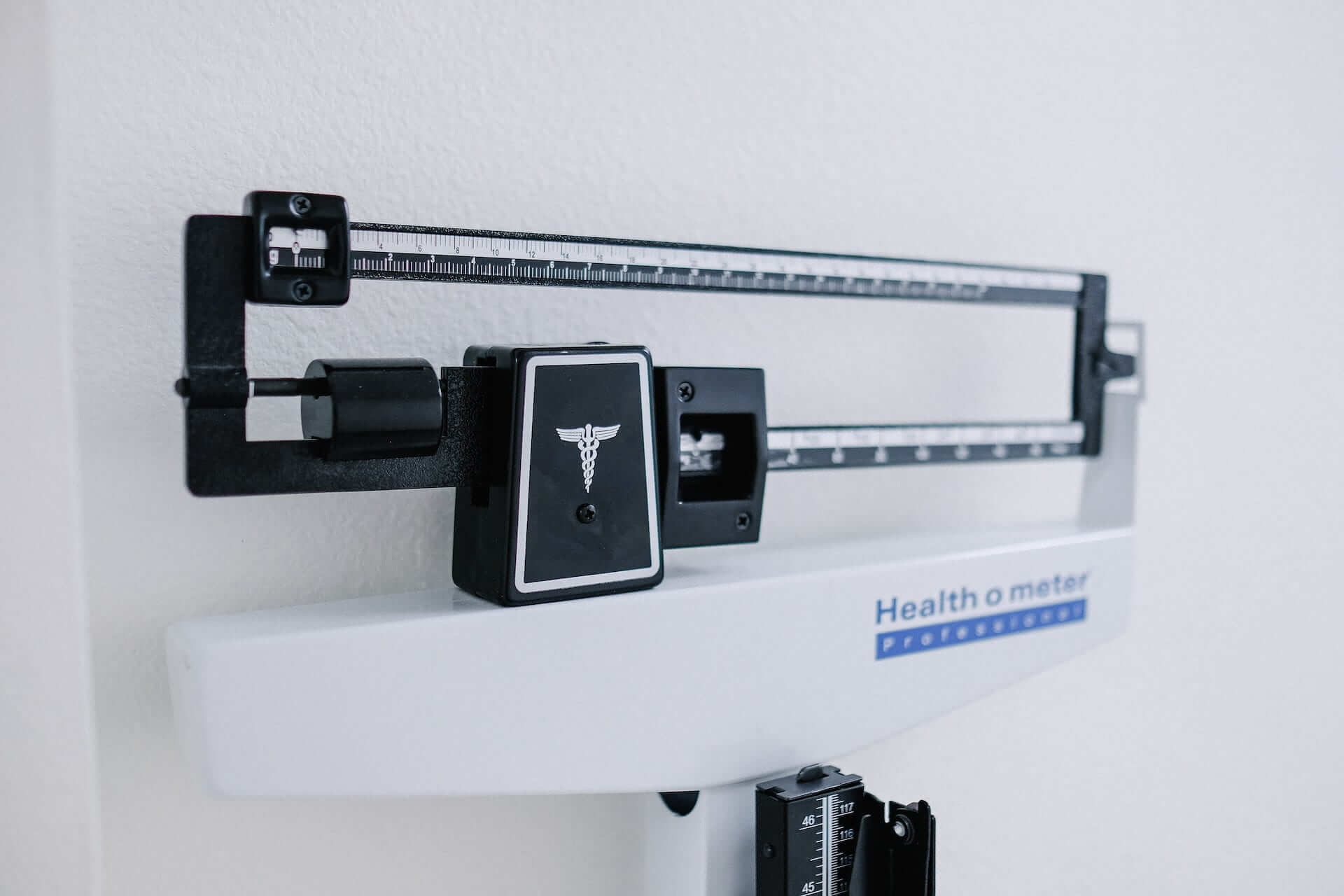In businesses across the country, employees throw in their $10 a week, hoping to win their local "biggest loser" contests. Your competitive streak may have led you to do the same. Until you see that the contest is open to men. No chance of winning now, you think.
It’s no surprise that more than 56% of American women<sup>1</sup> are trying to lose weight, in much higher numbers than men. Yet, obesity and physical inactivity continue to be epidemics that are risk factors for multiple diseases, including diabetes, high blood pressure, and heart disease.
And, women are disproportionately affected by obesity, with the prevalence of severe obesity<sup>2</sup> at 11.5% for women and 6.9% for men.
Do women struggle more with obesity because it’s more difficult for women to lose weight? Are men and women really that different when it comes to weight loss?
What We Know About How Women Lose Weight
While there are 3,500 calories<sup>3</sup> in one pound, so many variables determine weight loss that simply eating 500 fewer calories each day does not equal one pound of weight loss per week. In fact, researchers using models have demonstrated it’s typically much less<sup>4</sup>.
Genetic predisposition, biology, hormones, activity level, sleep, diet, and muscle mass are all factors that determine how much weight women lose.
Weight loss is often accompanied by a slower resting metabolic rate because:
- you are carrying less weight on your frame
- a certain percentage of your weight loss is muscle
However, the decrease in resting metabolic rate you experience with weight loss is often greater than can be explained by these two factors. The decrease in resting metabolic rate associated with weight loss contributes to getting stuck at a weight loss plateau and potentially even regaining weight.
For example, when participants from The Biggest Loser<sup>5</sup> were followed for six years, their resting metabolic rate was 500 kcal/day lower than expected based on their current weight and age, even though many participants had substantial weight regain.
How can you increase your resting metabolic rate? Exercise. Physical activity helps women maintain and increase their lean body mass as well as their resting metabolic rates.
Is it Harder for Women to Lose Weight?
There is a distinct difference in how men and women mobilize and store fat. Women have a higher percentage and different distribution<sup>6</sup> of body fat than men. Premenopausal women store fat in the buttocks and upper legs, whereas men and postmenopausal women store fat in the abdomen.
Men typically have a higher muscle to total body weight ratio due to higher testosterone levels, resulting in a higher resting metabolic rate. Since the average man is larger and has more muscle to support than the average woman, men can usually consume more calories without gaining weight than women can. However, testosterone levels begin to decline in both sexes in their 30s, leading to a slow decline in muscle mass.
With lower muscle mass, women are at a disadvantage for weight loss. Increasing muscle mass by upping resistance exercise and increasing fat burn by engaging in aerobic exercise may narrow the gap and help women lose weight.
Do Hormones and Metabolism Impact Weight Loss in Women?
Weight and premenopausal women

The menstrual cycle itself does not seem to be associated with weight gain or loss. However, having premenstrual syndrome can cause you to crave salty foods, which increases your body water. Therefore, it's normal to gain a few pounds around your period, but it’s water weight and should disappear within a few days.
<p class="pro-tip"><strong>Learn about </strong><a href="/blog/period-blood-sugar-levels">how your period can affect blood sugar levels</a></p>
Estrogen suppresses appetite<sup>7</sup> and progesterone stimulates it. As a result, women may notice a decreased appetite in the first half of their cycle while estrogen is dominant and an increased appetite in the second half while progesterone is dominant. Cravings also increase<sup>8</sup> during the second half of the cycle.
Premenopausal women<sup>9</sup> maintain fat in the lower body as subcutaneous fat; subcutaneous fat in the hips and thighs is rich in alpha receptors which respond to estrogen and store fat to support pregnancy.
Subcutaneous fat does not seem to be metabolically active and therefore does not increase the risk of metabolic syndrome, diabetes, and heart disease, like visceral fat does.
In premenopausal women, hormones stimulate and suppress hunger and determine where fat is stored, but do not directly cause weight gain.
Premenopausal women can lose weight by implementing a balanced regimen of appropriate portions of nutrient-dense whole foods, drinking more water and cutting back on liquid calories, increasing physical activity, prioritizing sleep, and managing stress.
<p class="pro-tip"><strong>Learn more about </strong><a href="/blog/hormones-and-weight-loss">hormones and weight loss</a></p>
Weight and PCOS
Women with polycystic ovary syndrome (PCOS) have a harder time losing weight than women who do not have PCOS. But, weight loss is still possible; read more about weight loss and PCOS in this Signos guide.
Weight and postmenopausal women
Most women who have been through menopause can attest that something has changed in their metabolisms, which contributed to weight gain. According to the Healthy Women Study, many women gain an average of five pounds after menopause. In another study, women in their 50s and 60s gained an average of 1.5 pounds per year<sup>10</sup>.
The Dangers of Increased Abdominal Fat
During menopause, estrogen levels decline, the ratio of androgens to estrogens increase, and most women see a redistribution of their body fat. There is typically an increase in total fat<sup>11</sup> and abdominal fat, and a decrease in lean body mass. Women transition from carrying weight on their buttocks and thighs to abdominal weight.
An increase in abdominal fat<sup>12</sup> with weight gain is typical for men and postmenopausal women when androgens dominate.
Abdominal fat, which is metabolically active and secretes chemicals that increase inflammation, is associated with an increased risk for cardiovascular disease<sup>13</sup>, diabetes<sup>14</sup>, and metabolic syndrome<sup>15</sup>. When men and postmenopausal women decrease abdominal and visceral fat, they decrease their risk for these diseases.
The Effect of Estrogen on Appetite
Some experts believe that estrogen inhibits hunger signals<sup>16</sup>, and the fluctuation of estrogen levels in perimenopause decreases this negative feedback system. As a result, menopausal women experience more intense hunger, which leads to weight gain.
Other experts believe there is no evidence linking decreasing estrogen levels with weight gain.
Instead, it is the natural decrease in resting metabolic rate associated with a decline in muscle mass, combined with less activity and changes in eating habits, that contribute to perimenopausal weight gain. In support of this theory: Women with premature ovarian failure don’t usually experience excessive weight gain<sup>17</sup> and tend to be leaner than age-matched participants acting as controls.
Other factors that can contribute to postmenopausal weight gain:
- decreased thyroid function
- polycystic ovary syndrome
- musculoskeletal disorders that affect the ability to engage in physical activity
Many experts conclude that menopause is associated with a redistribution of weight and an increase in abdominal weight, but not an increase in overall weight.
Women need fewer calories as they age because of a decrease in muscle mass. Women can most effectively lose weight after menopause<sup>18</sup> by increasing physical activity to slow the loss of muscle mass.
Weight Loss Tips for Women

There is no one diet or weight loss plan that works for everyone. Instead, pick a diet and weight loss plan that fits your lifestyle. Consistency is important for success.
Maintaining or increasing lean body mass and metabolic rate, decreasing abdominal fat, and increasing aerobic exercise are all associated with better weight control. The following tips can help:
1. Limit your intake of refined carbohydrates
White bread, white rice, as well as pasta, bagels, waffles, pizza, pancakes and more made with white flour, and most packaged foods contain highly processed carbohydrates that lack fiber and micronutrients. A bolus of carbohydrates causes a spike in your blood sugar.
The glycemic index<sup>19</sup> classifies foods based on how much they raise glucose levels in the blood relative to glucose or white bread. However, the American Diabetes Association has not endorsed this tool because they found that foods with the same glycemic index did not have the same impact on blood glucose levels. For example, Fanta soft drink and white pita bread both have a glycemic index of 68<sup>20</sup>, but blood glucose levels after consuming them may not be the same.
Monitoring your blood glucose levels can help you track the effects of dietary carbohydrates on your blood sugar.
2. Get high-quality sleep
Sleeping too little can affect your weight. When participants in a study slept six hours per night, they experienced reduced leptin levels (a hormone released by fat cells that signal your brain that you are full), increased ghrelin levels (a hormone that stimulates hunger and appetite), increased calorie intake by about 500 calories<sup>21</sup> with no increase in physical activity when compared to the control group.
The relationship between leptin levels, weight loss, and appetite is complicated. At every weight, women have higher concentrations of leptin than men. Many people with obesity have higher levels of leptin but are resistant<sup>22</sup> to its effects.
Research is ongoing to better understand why women have higher leptin levels and what this means regarding leptin resistance and weight loss. Leptin seems to regulate body fat predominantly by altering eating behavior.
Sleep disturbances around menopause<sup>23</sup> also contribute to weight gain. Night sweats, mood disorders, obstructive sleep apnea, and having low estrogen are all contributors to poor sleep. Chronic sleep problems can lead to daytime fatigue and decreased physical activity.
3. Build more muscle
Muscle burns more calories than fat, even at rest. Researchers found that a nine month resistance training program increased resting metabolic rate by five percent<sup>24</sup>.
All other factors equal, men with more muscle mass burn calories faster and have greater weight loss than men or women with less muscle mass. Resistance exercises<sup>25</sup> are a great way to increase muscle mass. As an added benefit, resistance training can increase bone density and slow osteoporosis.
Resistance exercise can also improve insulin sensitivity<sup>26</sup>. As insulin resistance increases, you move from healthy to prediabetes to diabetes. Checking your blood glucose levels can help monitor how resistance exercise and diet affect your blood glucose levels.
For women to lose weight, they need to monitor their after-workout snacks. After women work out, ghrelin levels increase while leptin levels decrease. This isn’t the case for men. Women have an increased drive to eat after a workout, which can sabotage their weight loss attempts if they’re not strategic about what (and how much) they eat.
Unfortunately, mechanisms to maintain body fat<sup>27</sup> are more effective in women than in men.
{{mid-cta}}
4. Eat mindfully
It’s easy to eat more calories and leave the dinner table unsatisfied when you’re on the run or using technology.
The average person makes over 200 food-related<sup>28</sup> decisions each day. Both food choice decisions and food consumption decisions can affect calorie intake and weight loss.
Food choice decisions focus on what you eat. Food consumption decisions are about how much you eat, and are strongly influenced by your environment—from the size of your bowl to package size to whom you eat with and where you eat.
These factors can increase food consumption more than we realize. Most of the factors that affect how much you eat and whether you are aware of how much you eat are subconscious.
In this study the average participant ate 30% more when presented with an exaggerated environmental cue, such as an extra-large portion size. However, only two percent of people recognized that this cue influenced their food consumption, and only nine percent stated that they ate more than they normally would have in the same situation.
Use a food scale to combat these environmental influences and keep your portion sizes in check. Log your food in a diary or app to help you eat mindfully.
<p class="pro-tip"><strong>Learn about </strong> <a href="/blog/body-positivity-weight-loss">body positivity and weight loss</a>.</p>
5. Keep healthy foods visible and easy to access
We gravitate towards foods that are easy to access. In a 2009 study, scientists used positron emission tomography scans to monitor brain activity in 13 females and 10 males. Even when women weren’t hungry, if they smelled, tasted, or observed their favorite foods, they had increased brain activity in areas that control the drive to eat<sup>29</sup>. This was not the case for men.
To avoid cravings and impulse eating, women should keep their favorite high-calorie foods out of sight.
6. Lower your stress
Stress leads to the release of the hormone cortisol<sup>30</sup>, which increases blood sugar to give you enough energy to fight or flee. When demands for cortisol remain high, the body converts pregnenolone into progesterone, a hormone used to make cortisol and aldosterone. These hormones increase fat storage and water retention.
This leaves less pregnenolone to make estrogen and testosterone. Testosterone increases muscle mass<sup>31</sup> and decreases fat mass. A decrease in testosterone and muscle mass leads to a decrease in resting metabolic rate. Low estrogen levels inhibit fat burning during exercise and may increase appetite.
Testosterone and estrogen provide some protection against abdominal fat until menopause. A decline in estrogen levels is associated with an increase in abdominal fat.
Abdominal fat is associated with an increase in cortisol<sup>32</sup>, setting up a vicious cycle.
7. Bump up your protein, but not too much
When people of normal weight lose weight, approximately 35% of their weight loss comes from muscle. In people who are overweight or obese, lean body mass only accounts for 20% to 30% of weight loss. Men tend to lose more lean body mass than women when dieting, especially early in the process.
Combining a high-protein diet and resistance exercise helps limit the loss of muscle mass when restricting calorie intake. However, a high-protein diet does not improve muscle function, and it may adversely affect metabolism, so experts recommend adequate<sup>33</sup>, not excessive, protein intake.
Protein can promote satiety and increase calorie burn after eating. In one study, experts suggested eating 1.2 to 1.6 grams of protein per kilogram of body weight per day<sup>34</sup> with 25 to 30 grams of protein per meal.
In another study, researchers found that a reduced carbohydrate, moderate fat and protein diet was most successful at helping postmenopausal women lose weight<sup>35</sup>.
8. Make dietary lifestyle changes
Counting calories and not seeing an equivalent weight loss can be frustrating and cause many women to give up on their weight loss goals.
Focus instead on making sustainable dietary changes, such as choosing lean protein sources, whole grains, and fruits and vegetables. Women who choose healthy foods and watch portion sizes are usually more successful at losing weight than women who exclude certain foods from their diet.
Women who restrict their calories<sup>36</sup> typically find this strategy unsustainable, and they binge and overeat because they’re hungry. Restricting calories can also decrease your basal metabolic rate, making losing weight and keeping it off even more difficult. In general, women should not eat less than 1,200 calories per day.
Final Thoughts
The relationship between weight loss and health is complicated. While carrying excess weight on your body can adversely affect your health, so can crash dieting, restrictive eating, and obsessive exercising.
Instead, make lifestyle changes and mind shifts that support your weight loss goals. Think of food as fuel, exercise as physical activity, and sleep as necessary for your health. These strategies work for successful, sustained weight loss.
Related reading: Postpartum Weight Loss: How To Lose the Baby Weight
References
- https://www.cdc.gov/nchs/products/databriefs/db313.htm
- https://www.cdc.gov/nchs/products/databriefs/db360.htm
- https://jamanetwork.com/journals/jama/fullarticle/
- https://www.nature.com/articles/ijo201351
- https://www.ncbi.nlm.nih.gov/pmc/articles/PMC4989512/
- https://journals.lww.com/co-clinicalnutrition/
- https://doi.org/10.1016/j.maturitas.2011.12.016
- https://www.ncbi.nlm.nih.gov/pmc/articles/PMC6257992/
- https://academic.oup.com/jcem/article/89/4/1869/2844573
- https://www.mayoclinicproceedings.org/article/
- https://www.mayoclinicproceedings.org/article/
- https://www.tandfonline.com/doi/pdf/10.3109/13697137.2012.707385
- https://www.jacc.org/doi/abs/10.1016/j.jacc.2016.06.067
- https://academic.oup.com/ajcn/article/87/5/1118/4650903?login=true
- https://www.nature.com/articles/nature05488
- https://www.ncbi.nlm.nih.gov/pmc/articles/PMC6947726/
- https://www.tandfonline.com/doi/pdf/10.3109/13697137.2012.707385
- https://europepmc.org/article/med/9689203
- https://www.ncbi.nlm.nih.gov/pmc/articles/PMC4994556/
- https://extension.oregonstate.edu/documents/glycemicindex.pdf
- https://www.ahajournals.org/doi/10.1161/circ.125.suppl_10.amp030
- https://www.ncbi.nlm.nih.gov/pmc/articles/PMC6893721/
- https://jcsm.aasm.org/doi/abs/10.5664/jcsm.26347
- https://www.nature.com/articles/ejcn2014216
- https://pubmed.ncbi.nlm.nih.gov/22569489/
- https://academic.oup.com/jcem/article/85/7/2463/2852127
- https://pubmed.ncbi.nlm.nih.gov/19073905/
- https://www.researchgate.net/publication/
- https://www.bnl.gov/newsroom/news.php?a=110876
- https://journals.lww.com/psychosomaticmedicine/
- https://www.ncbi.nlm.nih.gov/pmc/articles/PMC4476341/
- https://pubmed.ncbi.nlm.nih.gov/11020091/
- https://www.ncbi.nlm.nih.gov/pmc/articles/PMC5421125/
- https://academic.oup.com/ajcn/article/101/6/1320S/4564492?login=true
- https://www.cambridge.org/british-journal-of-nutrition/article/
- https://www.ncbi.nlm.nih.gov/pmc/articles/PMC5764193/
- Item 1
- Item 2
- item 3
































